Making soap is the fun part, but developing a pricing strategy to sell your soap is often the not-so-fun-part. Our guest blogger Dawn Cabral-Quimby came back from Soap Guild 2014 with an excellent run down on Lela Barker’s strategy on product pricing, and it’s a must-read for any soapy business owner. — A.M.
Do you have accurate product pricing? Are you accounting for your labor? Overhead? Factoring in your paper towels used? What!?
Ten years ago, Lela Barker was a broke single mother living in her parents’ spare bedroom. Today, she is the creator and CEO of Bella Lucce (an award-winning, international beauty company), the executive director of a Moroccan-based nonprofit and president of Lucky Break, a small business consulting firm serving the creative community.

Looking for more help starting a soap business? Check out the posts represented above!
Top Row: Craft Show Tips Galore, Does It Get Easier?, Go with the Flow
Middle Row: Dealing with Unhappy Customers, Why a Newsletter is a Must, Switchtasking,
Bottom Row: How To Photograph Products, On Palm Oil, Visualizing Success
Lela shared her knowledge of business concepts in a simple, practical way and with lots of spunky attitude. She explained that, “you may create soaps with abundant lather and the prettiest swirls this side of Mississippi, but if you don’t understand your product expenses and price those soaps accordingly, then you’re going to spin yourself silly on a hamster wheel of frustration.”
Here are the basics of what Lela showed us: first determine your distribution model, calculate your Cost of Goods Sold, and choose a price strategy.
Pick a Distribution Model
A distribution model describes how you plan on selling your product. Do you plan on selling products directly to the consumer through Etsy (this is probably the easiest method, especially if you are just starting out)? Perhaps you’re considering using a sales representative, who are great at selling, and will receive a commission on every sale. Or maybe you’re thinking of using a distributor, who will take possession of your goods, market and sell them for you (and also take a certain percentage of the profit). Identifying your distribution model is an important decision that should be carefully weighed.
Calculate the COGS!
Calculating the Cost of Goods Sold (C.O.G. S.) for bringing a product to market involved a lot of math. Lela broke this down into three categories of costs: the raw materials, labor, and overhead.
Raw materials – include every ingredient that goes into your product. For soap, this will include things like the oils, water, colorants, additives, latex gloves, hairnets, paper towels, packaging, labeling, etc.
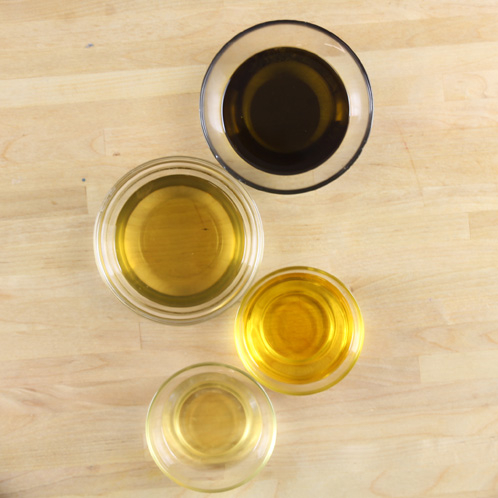
Oils are a soapmaking raw ingredient
Take the cost of each raw material needed to make a production “run” of your product, and then divide that cost by the number of units created. For example, let’s say that during a production run of your soap (which makes 50 bars), you use one pair of latex gloves (at $1/pair), then:
$1 (pair of gloves) / 50 bars of soap = .02 cents per bar
Your raw materials cost for one bar will include .02 for latex gloves. Keep in mind, you’ll need to do this for every raw material item you use to make your soap!
Another item to consider is your shipping costs, or, how much does it cost to land the raw materials on your doorstep. She recommends looking at your invoices and determining the average percentage of your shipping costs. Then factor that into your cost calculation.
Labor – Is labor just your time that you put into making your product? According to Lela, you should also factor in payroll taxes.
Lela recommended making a list of every step involved in making your product. Record the time for each step over three production runs and take an average of those times. This may include things like: prepping the workspace, gathering materials, doing dishes, clean off soda ash, inspection and quality control, etc.

You may have great products, but you need great people to pack and ship them too! These Bramble Berry employees too a quick break to show off their soapy mustaches.
Determine what your labor rate is and again divide by the number of units in a production run. Oh, and don’t forget to add in your state’s payroll tax rate, which you can find from your state board of equalization.
Overhead costs include everything else required to create your product: rent, insurance, utilities (electricity), phone, internet access, etc. This is a tricky one, but Lela suggested that you total all of your overhead expenses per month. Then determine the number of hours each of these costs relate to your production run. Then, your overhead per product will simply be:
Total overhead expenses _
# of hours to make your product
Pricing Strategy – Once you’ve determined what your C.O.G.S. is, the next step is to determine a pricing strategy.
Product C. O. G. S. + Profit = Price
The Multiplier Strategy involves multiplying the C.O.G.S. by a specific value to get the final price. The multiplier is up to you, but keep in mind the higher your number, the more expensive your products will be to consumers. Let’s say you use 2 as a multiplier, meaning your products will sell for double what it costs to make them. If your C.O.G.S. is $1.10 per unit, then multiplying by 2 would give you a price of $2.20.
The Percentage Strategy is another method for determining your final price.
Product C. O. G. S. * x% = Price
Or maybe you choose 200%, 300%, etc. Lela believes that 200% is the magic number to use. If your C.O.G.S. is $1.10 per unit, then your equation would look like this: 1.1 x 2 = 2.2. This is your mark-up. Add your mark-up to the original C.O.G.S.: 2.2 + 1.1 = $3.30 would be the final price of your product for a 200% markup.
The Fixed Amount Strategy basically means you add a fixed amount to every item to reach your price.
Product C. O. G. S. + (fixed amount) = Price
Whatever you decide, Lela suggests that you be consistent. She also suggests that once you’ve determined your price, it’s good to compare your price to your competition, but don’t cave in to lowering your price because you see your competitor’s price is lower. They may have not gone through this exercise to price out their product and they may not be at that farmer’s market next year because of it, but you will be!
If you want to read even more about pricing, check out the following posts on the Teach Soap Forum:
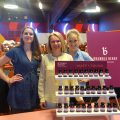

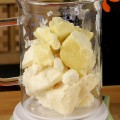
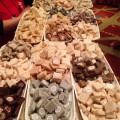
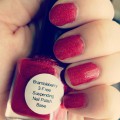
Thanks so much for sharing all this great information from the conference, Dawn!
Hi Jean!
I’m glad you found this post helpful 🙂
-Amanda with Bramble Berry
Hello!
Another thing that I learned since the soap conference is that the apostrophe (‘) in my soap company name (Horsin’ Around Soap) is causing a lot of grief, especially in website names, email addresses, etc. and so I made the leap to convert my company name over to include the “g” back in the name.
Facebook: facebook.com/horsingaround.soap
Website: http://www.HorsingAroundSoap.com
Sorry for any confusion!
Dawn
Hi Dawn!
Oh I see where that may cause some grief. I think Horsing with the “g” is just as cute :). I will get that fixed in the post!
-Amanda with Bramble Berry
This article was really timely for me, thank you so much for putting it out there! I am entering my third market season and starting to understand pricing a bit more.
I will be using these formulas. You guys are awesome!
Hi Lindsey!
I’m so glad that you enjoyed this blog post! Sometimes it can take a little time to really figure out what kind of pricing works for you, I’m happy that process is coming together for you!
-Amanda with Bramble Berry
Hello Anne- Marie and Brambleberry team!
I hope you don’t mind my correcting this math: .02 cents is .0002 $, so the result of your equation would be .02$, or 2 cents (not .02 cents).
Below, 200% is not same as multiplying by 2. 100% is equal to multiplying by 2, and 200% would be same as multiplying by 4.
I hope we can eventually agree on these!
Thanks for the article!
Hi Maja,
Great catch! I realized the mark up wasn’t being added to the original cost. I’ve revised that section now =) Thanks again!
Hi again, Kirsten! I’m laughing to myself here- wanting to correct your math, I blew up even more.
So, 200% of a number will be equal: that number x 3 (not 4 and certainly not 2). Now, I’m done.
Btw, I don’t know if I’m only one here who pays attention to the math details, but for the sake of validity, please, don’t mind my (self)corrections.
Have a nice day!